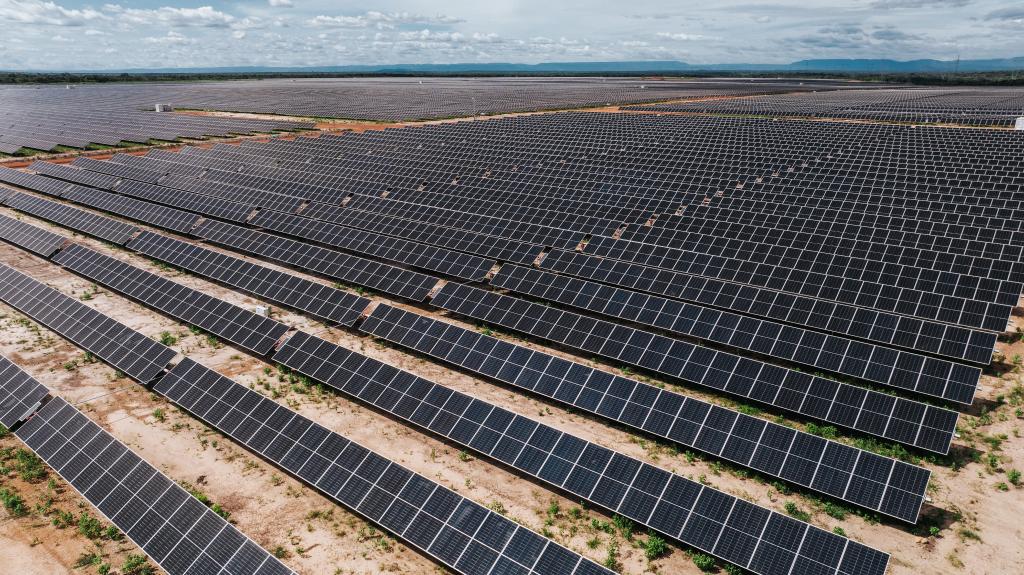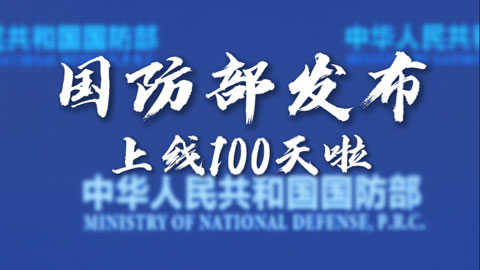
by Xinhua writer Ma Qian
BEIJING, Nov. 10 (Xinhua) -- "True friends always feel close to each other no matter the distance between them." Chinese President Xi Jinping has cited this household line from an ancient Chinese poem to characterize China's relations with countries in Latin America and the Caribbean.
Since becoming the Chinese head of state, Xi has flown five times across half of the globe to Latin America and visited 11 countries in the region. There, he met national leaders, witnessed the signing of cooperation deals, visited local farms, sipped Costa Rican coffee and was gifted an Argentine soccer jersey with his name on it ...
"There is a natural feeling of affinity between our peoples," Xi once said. As the Chinese leader is about to cross the vast oceans again for another journey to this colorful land filled with hope, his visit to Peru and Brazil will further boost the exchanges and cooperation between the two sides and inject new impetus into the building of a China-LatAm community with a shared future.
A MEGA PORT UNDER BRI
Xi calls Peru China's neighbor across the Pacific. Although the two countries are thousands of miles apart, a port scheduled to be inaugurated later this month will further enhance their "neighborliness."
Chancay, located about 78 km north of Lima, the Peruvian capital, is a natural deep-water port. Once in operation, it will become a major gateway to the oceans and a crucial hub in the South Pacific, helping redistribute cargo from countries such as Chile, Ecuador, Colombia, Brazil, and Paraguay. Moreover, the sea freight time from South America to Asia will be reduced by half, from 45 days to 23.

The port is a significant collaborative project between China and Peru, in which Xi has played a decisive role. When meeting with Peruvian President Dina Boluarte during her visit to Beijing in June, Xi called for joint efforts to complete the port on schedule and build it into a new land-sea corridor between China and Latin America.
"'From Chancay to Shanghai' has become a catchphrase in Peru, indicating a bright future of mutually beneficial cooperation between the two nations," Xi told his Peruvian counterpart.
Even though Chancay and Shanghai have similar Spanish pronunciations that may confuse many, people in Peru embrace this catchphrase with passion, hoping that Chancay may turn into Peru's Shanghai in the future.
As a flagship Belt and Road cooperation project, the port will not only boost trade between the two countries but also bolster connectivity within and beyond the continent.
Over the past decade, China and Latin America have become partners under the Belt and Road Initiative (BRI) proposed by Xi. So far, 22 countries in the region have signed BRI cooperation documents with China. Projects jointly built under the BRI, including the Belo Monte Hydropower Plant ultra-high-voltage transmission line in Brazil, Argentina's Belgrano Cargas railway and the Jamaica North-South Highway, have borne fruit.
"China and Latin America enjoy strong economic complementarities. Their development strategies are mutually aligned, and they have natural advantages for strengthening cooperation," Xi has said.

Since 2012, China has been Latin America's second-largest trading partner. In 2022, trade between the two sides grew 7.7 percent year on year to reach 485.7 billion U.S. dollars. According to a recently released report by the UN Economic Commission for Latin America and the Caribbean, China will be the region's fastest-growing export market this year.
With the Chancay Port, trade between China and Latin America is expected to soar further. "The Chancay Port will help Peru improve shipping efficiency and deepen trade cooperation with Asia," said David Gamero, a deputy manager at the Chancay megaport project.
INTERACTION OF TWO GREAT CIVILIZATIONS
"Condition of good friends, condition of old wine," Xi cited a Brazilian proverb to describe the long-running friendship between the Chinese and Latin American people when addressing the Brazilian National Congress during a visit to the South American country in 2014. It was Xi's first visit to Brazil after assuming the Chinese presidency.
In the speech, he told stories of people-to-people exchanges between the two countries. He also quoted Brazilian lyricist and novelist Paulo Coelho and mentioned the Brazilian TV series Escrava Isaura, which was quite popular in China in the 1980s.
"I listened to President Xi's speech at the Congress in 2014," said Fausto Pinato, president of the Brazil-China Parliamentary Front of the Brazilian National Congress. "In addition to the cooperation between the two countries in diplomacy and trade, he also mentioned plenty about Brazilian culture, such as Brasilia's architecture, President Kubitschek's words, Brazilian TV series and a Brazilian journalist."
"His knowledge of Brazil made us proud," he added.

Cultural exchanges are a crucial pillar of interaction for China and Latin America, two great civilizations. Xi has repeatedly stressed that people-to-people amity is vital to sound state-to-state relations.
In fact, while still a local official, Xi was engaged in cooperation between China and Latin America.
In 1996, Xi, then deputy secretary of the Communist Party of China (CPC) Fujian Provincial Committee, visited Brazil for the first time. He flew to Fortaleza, the state capital of Ceara in northeastern Brazil, and signed a memorandum of understanding to establish a sister province/state relationship between East China's Fujian province and Ceara.
"I remember spending New Year's Day 1996 on the road ... There is some serendipity between me and the city," Xi recalled when attending the BRICS summit in Fortaleza in 2014.
China has established approximately 180 sister-city partnerships with 17 countries in Latin America and the Caribbean, which illustrates their ever-flourishing cultural and people-to-people exchanges. In May last year, Fortaleza established a sisterly relationship with Xiamen, a coastal city in Fujian where Xi used to serve as deputy mayor. The sister cities are known as the "BRICS Twin Cities" because both have hosted BRICS summits.
In recent years, the platforms for people-to-people and cultural exchanges between China and Latin America have become increasingly diverse, from the China-Latin America Cultural Exchange Year and the Latin American and Caribbean Art Season to the "Bridge of the Future" China-Latin American Young Leaders Training Campus.
"The rich cultures and arts of China and Latin America bloom like splendid flowers on each other's vast land, pushing the mutual learning between the Chinese and Latin American civilizations to a new high," Xi said when attending the closing ceremony of the China-Latin America Cultural Exchange Year in 2016 in Peru.
A SHARED VISION FOR COMMON DEVELOPMENT
Addressing the China-Latin American and Caribbean Countries Leaders' Meeting held in Brazil in 2014, Xi proposed that China and Latin America and the Caribbean build a community with a shared future.
China and Latin American countries are all developing ones, at similar stages of development, and shouldering the same development tasks. They can be partners in their respective pursuit of modernization.
During Brazilian President Luiz Inacio Lula da Silva's China visit last year, Xi and his Brazilian counterpart witnessed the signing of a series of cooperation agreements, with many related to such new areas as poverty reduction, digital economy and telecommunications.

That served not only as an indication that the two countries will continue to create new growth drivers and jointly promote high-quality cooperation to further benefit their people, but as a reflection of the new trend in the win-win cooperation between China and Latin America.
Take new energy cooperation. Latin America, with abundant sunshine, is one of the world's most promising photovoltaic (PV) markets. Statistics of InfoLink show Latin America had 24.8-27.4 GW of PV demand in 2023, with Brazil being the largest market, followed by countries such as Chile and Mexico. On the other hand, China has been a global leader in the PV industries.
Chinese companies have been actively involved in the construction of PV power plants in Latin American countries, helping to transform the region's energy sector. In Brazil, the Marangatu Solar Complex, invested by SPIC Brazil, a subsidiary of China's State Power Investment Corporation (SPIC), was officially inaugurated in June this year. It will generate enough electricity to power approximately 550,000 homes annually.

"Today we have a very large presence of Chinese companies in Brazil ... This has contributed to the reindustrialization of Brazil," said former Brazilian President Dilma Rousseff in a recent interview with Xinhua. She is now head of the New Development Bank, a multilateral development bank established by the BRICS group.
In late September in Beijing, ahead of the 75th anniversary of the founding of the People's Republic of China, Xi presented Rousseff with the Friendship Medal, China's highest award for foreign nationals, to honor her contribution to the China-Brazil friendship.
Rousseff said she was amazed by China's remarkable development in recent decades. She spoke highly of Xi's philosophy of people-centered development. "I share deeply" that vision, she said.
China, led by Xi, is striving to realize its dream of national rejuvenation, while unity, cooperation, development and revitalization are the dreams of the Latin American people. In Xi's eyes, China and Latin American countries are like-minded good friends and partners marching forward hand in hand.
"The 'Chinese Dream' and the 'Latin American Dream' are closely linked. Both sides should take the courage to pursue the dream and jointly make the dream come true," Xi has said.




















